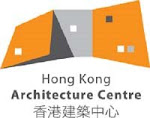Hong Kong is just a miniscule dot off the southern coast of China and at first glance not special at all. Its land area of 1104 km2 makes it already small, but then 75% of the land is actually undeveloped. It is amazing then, that seven million people can use this little piece of space into one of the most bustling, vibrant cities in the world.
Living in Hong Kong is nearly the opposite of growing up in North American suburbia, where it was almost a requirement to own a car if you wanted to get anywhere. All the streets and wide roads were neatly organized into a nice grid, which you’d travel on during a twenty minute drive to reach a large stand-up sign proclaiming the name of some shopping mall. Then you would park your car (free) in the large parking lot and walk into a strip mall with some stores so large that you could have your morning exercise inside.
In Hong Kong one of my first difficulties was getting anywhere I wanted. Whereas locations and directions were clear in North America, I gave up using Google maps after one week in Hong Kong. Not only were the cluster of streets tangled with each other in random directions, but many of them didn’t even have street signs! Eventually I learned to rely on sight recognition, which led me to another astonishing discovery—Hong Kongers know their city inside out. Name any area and they will likely know where it is, how to get there, what there is to do, and what kinds of people live there. Perhaps it is because of these small spaces at home that Hong Kongers have gone out to explore the city instead.
In “The Laws of Simplicity,” John Maeda describes creating simplicity by hiding complexity, giving the example of a VCR player. Even though there are dozens of buttons, the effect is not jarring because they have been hidden by a flip cover. Hong Kong, out of necessity, has applied the same principle into urban planning. Suppose you walk down a street in Mong Kok for ten minutes looking for a restaurant but don’t find one at all. Where did they go? In that ten minute walk, you likely have passed a dizzying selection of them already, only they were obscured by narrow passageways into buildings where they resided on the 8th floor.
Hong Kong has had to deal with a land shortage for many decades, and making it extremely difficult to find areas to build new structures even on reclaimed land. Instead, it has poured its wealth of artistic talent into interior design, creating some of the most beautifully designed hidden jewels. Oftentimes, it is the lack of space that makes it easier to design a room according to a strong concept or set of principles as they come up with creative solutions to maximize space. It is not uncommon to have the space under the seating area in a restaurant transformed into a drawer for holding dishes, or have ceiling-high bookshelves. Moreover, Hong Kong’s status as an export hub, gateway to China, and melting pot of international ideas means that these interior designers usually have the resources to create whatever they dream of making.
There really aren’t that many places in Hong Kong, and it is very possible to memorize all the MTR stops if you take it often enough. And yet, this city will never get boring because it is continuously moving. It is fascinating how the trends change so dramatically, whether it is in food, fashion, or design. Every couple of weeks, a new full-scale exhibition is installed in Times Square; and at least thirty more are recommended by the Art Map every single month of the year, and not just in the summer. And despite the 35C weather in August, the crowds that come out to these events, such as the Hong Kong Comic Fair in Wanchai, would dwarf the mass of Boxing Day shoppers in downtown Toronto any year. And just how many cities in the world can boast its own thriving music and movie industries? Most countries don’t even have that and yet Hong Kong’s entertainment industry has millions of fans in Singapore and other Southeast Asia countries, as well as Canada, USA, Europe, and other areas with overseas Chinese.
Hong Kong is just a small piece of land with not much to call its own. And yet the people have combined their collective relentless energy, creativity, and strong will to work around all these small spaces to create a stunning city that will continue to surprise the visitor no matter where they look.
Writer: Michelle Kwok
skip to main |
skip to sidebar
_copy.jpg)

An invaluable piece of architecture in the middle of '石屎森林'
Thanks for Viewing
Hong Kong Architecture Centre
_copy.jpg)
發佈者
Architects Choice
Archi Links
- The Hong Kong Architecture Centre
- Dezeen - Design Magazine
- Professional Green Building Council
- ArchiNews
- Dexigner Design Portal
- Hong Kong Sculpture Society
- The Hong Kong Institute of Architects
- The Hong Kong Institution of Engineers
- The Hong Kong Institute of Landscape Architects
- Hong Kong Institute of Planners
Lui Seng Chun

An invaluable piece of architecture in the middle of '石屎森林'



沒有留言:
發佈留言